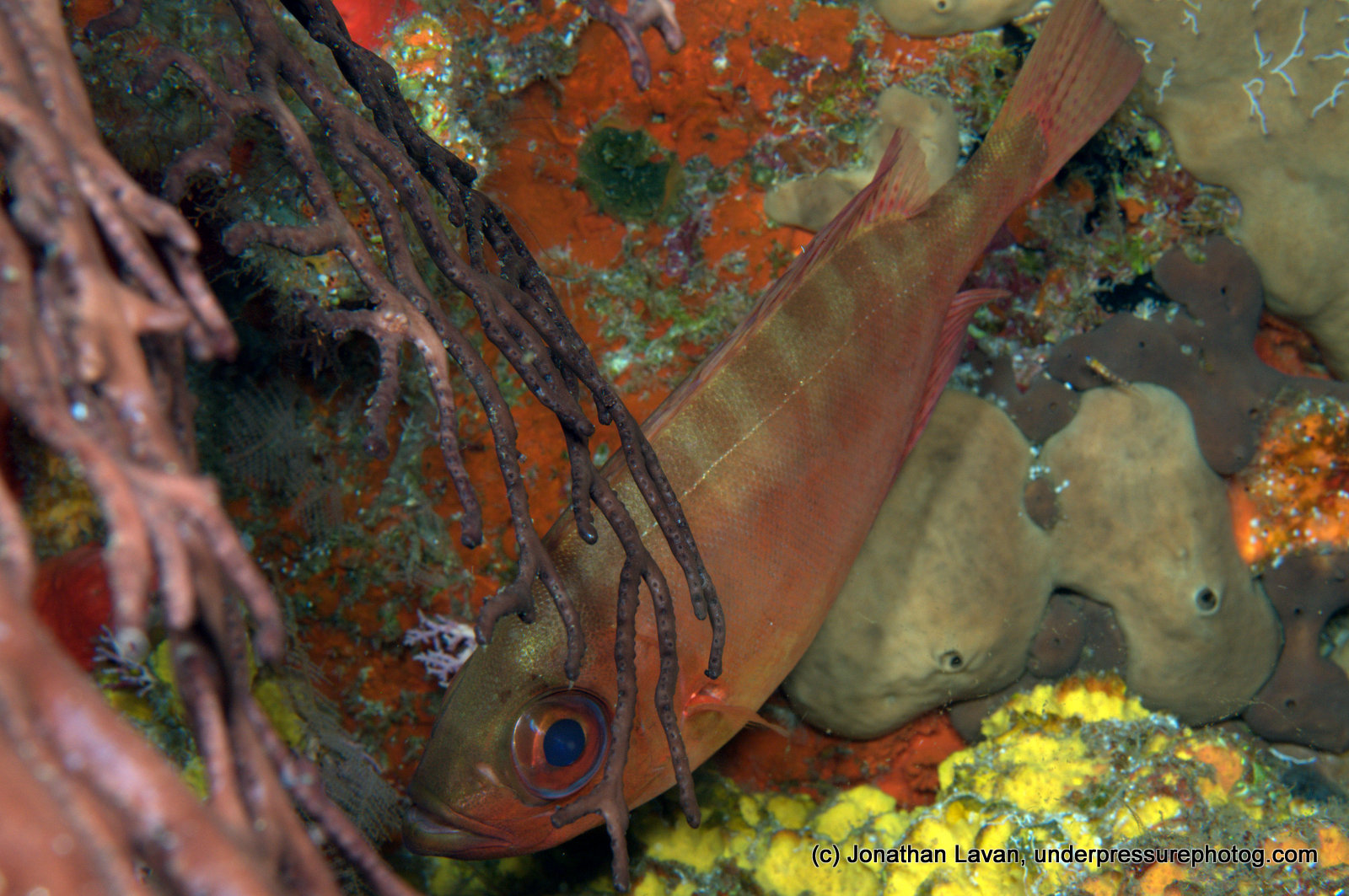Caribbean Creature Feature: The Glasseye Snapper
May 27
The Glasseye Snapper; Grumpy Loner of the Reef
The Glasseye Snapper (Heteropriacantus cruentatus) is not a true snapper at all. Most snapper fit into the genus Lujantus with a few exceptions, but all these fish have the same general body shape, habits and behavior. The Glasseye Snapper, on the other hand, looks and behaves much more like a squirrel or soldierfish, or the even more elusive Bigeye (Priacantus arentus), which it certainly looks a great deal like but is also not related to in any way. Fish that look similar and occupy the same habitats are, more often than not, not related by genus and/or species but have developed under concurrent or parallel evolution; developing many of the same characteristics over the millennia, as they have filled the same niche.
The Glasseye is a largely noctural fish and so its body is red and its eyes are large. It is very hard to see red in low light. It is the first color to disappear at depth – in fact, it disappears within the first fifteen feet. This makes the Glasseye’s job of being cryptic, whether hunting or hiding, much easier. Obviously, the bigger the eye the easier to see others in the dark. Often, as you are swimming along on your dive you will happen upon a Glasseye tucked under a coral head or behind a sponge looking rather grumpy with an underslung jaw, always alone and seeming to prefer it that way. The other “red, big-eyed fish” (Squirrel & Soldierfish) will sometimes be alone and sometimes be in small polarized schools, but our Glasseye is a true loner.
As mentioned, the Glasseye Snapper is much more commonly seen than the very similar Bigeye and can be distinguished from it by wavy, broken-up, and sometimes very faint, silvery, body bars that the Bigeye will never have. The Glasseye also has a shorter body and prefers shallower water and is therefore more frequently seen by divers. During the day, the Glasseye will be found peering out at you from a safe distance cautious but curious, and always looking grumpy.
The Glasseye is a great fish for the beginning underwater photographer, as they are always stationary and looking right at you. Shots one and two show the right and left lateral views of two different fish, showing just how much bounce you can get from your strobes (even at a low setting) due to the unusually reflective quality of the fish’s scales. The third shot in three quarter view with the fish’s body running from bottom left to top right and the eye framed by the rope sponge is, in my opinion, a superior shot for its composition and the story it tells. Always keep your eye pealed for the different or atypical shot. Knowing as much as you can about an animal’s behavior, habits and habitat will alert you to when you’re seeing something unusual can make the difference between a good shot and a great shot. And the next time you swim by a Glasseye Snapper on your favorite Caribbean coral reef, wave “hello” or snap a shot. He may look grumpy but I’m sure, deep down, he’ll appreciate the gesture.
Enjoy this blog? Check out our scuba blog at Bluewater U.

By: Jonathan Lavan
Jonathan Lavan: The owner/operator of Underpressure Diving & Nature Photography is a citizen scientist and wildlife expert and has been SCUBA Diving for thirty years and taking photographs both above and below the water for about 10. He was pleased to have been made Volunteer of the Year for 2012 by the Reef Environmental Education Foundation. As a SCUBA Diver he has been a photographer, teacher and research associate for many different organizations.He is a staunch environmentalist and educator of young people. Jonathan is committed to making a difference on this planet through his images and his message of good will to all creatures. www.underpressurephotog.com.





Related Articles
Popular Articles